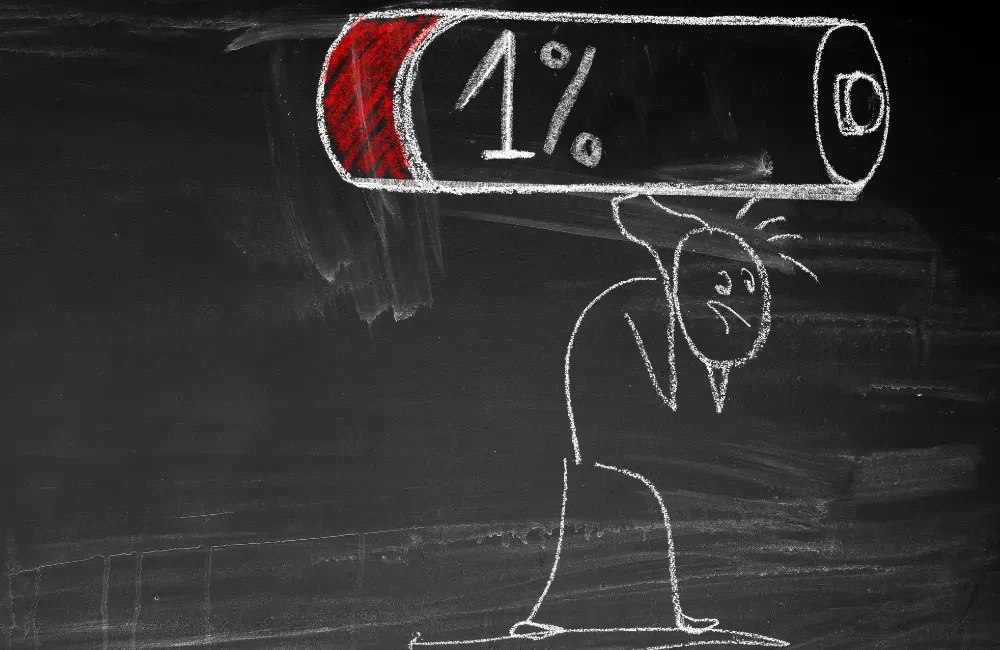ADHD (Attention Deficit Hyperactivity Disorder) is a well-known condition that affects millions of people worldwide. While it is commonly associated with symptoms like inattention, hyperactivity, and impulsivity, many people with ADHD also experience another challenge that’s less talked about: ADHD burnout.
ADHD burnout refers to the feeling of being mentally, emotionally, and physically drained due to the constant effort of managing ADHD symptoms. It’s a frustrating, overwhelming, and exhausting experience that can affect every aspect of daily life. But the good news is that it can be managed. In this article, we will dive deep into what ADHD burnout is, the symptoms to watch for, and most importantly, practical strategies for overcoming it.
Let’s explore ADHD burnout, why it happens, and how you can take steps to regain control and find balance in your life.
What is ADHD Burnout?
ADHD burnout is a term used to describe a state of emotional, mental, and physical exhaustion resulting from the constant demands of living with ADHD. Individuals with ADHD often need to put in extra effort to stay organized, focused, and on top of their responsibilities. This ongoing effort can lead to burnout when the brain is overstimulated and unable to manage the stress any longer.
While burnout can happen to anyone, ADHD individuals may be at a higher risk due to the nature of their condition. The constant juggling of tasks, managing distractions, dealing with forgetfulness, and striving for productivity can eventually take a toll on mental health, leading to feelings of frustration, hopelessness, and overwhelm.
Symptoms of ADHD Burnout
Recognizing ADHD burnout is the first step toward managing it effectively. Here are some common symptoms of burnout in individuals with ADHD:
- Emotional Exhaustion
ADHD burnout often leads to emotional fatigue, where a person feels drained and overwhelmed by the simplest of tasks. They may feel irritable, impatient, or disconnected from others, even in situations that wouldn’t typically cause these feelings.
- Decreased Motivation
When burnout sets in, motivation can drop significantly. Even tasks that were once enjoyable or important may feel too daunting to tackle. This lack of motivation can lead to procrastination, making it even harder to get things done.
- Difficulty Concentrating
Individuals with ADHD already struggle with concentration, but during burnout, the ability to focus becomes even more challenging. Tasks that require attention can feel impossible, and mental fog sets in, making it hard to think clearly or prioritize tasks.
- Increased Anxiety or Stress
Managing ADHD symptoms can naturally increase stress levels, but during burnout, these feelings can escalate. You may feel overwhelmed by the number of tasks at hand and anxious about your inability to complete them.
- Physical Symptoms
Physical exhaustion is common in ADHD burnout. People may experience sleeplessness, headaches, muscle tension, and digestive issues. Stress often manifests physically, making it difficult to feel rejuvenated even after rest.
- Withdrawal from Social Interactions
Burnout can lead to social withdrawal, as individuals may feel like they’re not performing at their best or are too tired to engage with others. This isolation can worsen feelings of loneliness and frustration.
Why Does ADHD Burnout Happen?

There are several factors that contribute to ADHD burnout. The main reason is the mental and emotional toll of constantly having to manage ADHD symptoms. Here’s why ADHD burnout happens:
- Executive Dysfunction
People with ADHD often experience executive dysfunction, which makes it harder to plan, organize, and complete tasks. The constant effort to manage these cognitive challenges without the proper support can lead to burnout over time.
- Sensory Overload
Many individuals with ADHD are sensitive to stimuli, whether it’s noise, light, or other distractions. This sensory overload can overwhelm the nervous system and contribute to burnout when it’s not properly managed.
- Constant Effort to “Keep Up”
Living with ADHD often means putting in extra effort to stay on top of things. This can be exhausting, especially when it feels like you’re constantly fighting against your natural tendencies. Over time, this effort can deplete your energy reserves and lead to burnout.
- Lack of Support
Without a solid support system in place, people with ADHD may struggle to manage their daily responsibilities. This lack of external support or understanding can make managing the condition even more taxing and lead to burnout.
Managing and Overcoming ADHD Burnout
While ADHD burnout can feel overwhelming, there are several strategies you can implement to manage the symptoms and regain control. Here are some practical tips to overcome ADHD burnout:
- Prioritize Self-Care
One of the best ways to recover from burnout is to focus on self-care. Regular sleep, healthy eating, and physical activity are essential for maintaining energy levels. Make sure you’re getting enough rest, staying hydrated, and taking time for relaxation activities.
- Set Realistic Expectations
It’s essential to be kind to yourself. Understand that you can’t do everything perfectly. Set achievable goals and break tasks into smaller, more manageable steps. Don’t expect too much from yourself, and allow yourself to rest when needed.
- Create a Structured Routine
A structured routine can help reduce the mental clutter that contributes to burnout. Plan your day in advance, set reminders, and stick to a consistent schedule. The more predictable your day is, the less mental energy will be spent on decision-making.
- Seek Professional Help
Therapists, counselors, or ADHD coaches can offer valuable strategies for managing ADHD symptoms and burnout. Cognitive behavioral therapy (CBT) and mindfulness techniques can help address stress, anxiety, and emotional exhaustion.
- Use External Supports
External supports like reminders, timers, and apps designed for people with ADHD can be very helpful. These tools can help you stay on track, manage tasks, and reduce feelings of overwhelm.
- Manage Stress Through Mindfulness
Incorporating mindfulness or meditation into your routine can be incredibly beneficial for reducing stress and improving focus. Even just a few minutes of deep breathing or mindfulness exercises each day can have a positive impact.
10 Tips for Managing ADHD Burnout

To help you regain balance and avoid future burnout, here are 10 actionable tips to incorporate into your life:
- Take Breaks Regularly: Make sure to take breaks throughout the day to avoid mental fatigue.
- Set Time Limits: Limit the amount of time you spend on one task to avoid getting too overwhelmed.
- Delegate Tasks: Don’t hesitate to ask for help from family, friends, or coworkers.
- Practice Positive Self-Talk: Be kind to yourself and acknowledge your efforts, not just your outcomes.
- Join Support Groups: Find online or in-person ADHD support groups to share experiences and strategies.
- Exercise Regularly: Physical activity can help reduce stress and improve overall well-being.
- Try Yoga or Tai Chi: These gentle practices can help improve focus and reduce stress.
- Stay Organized: Use planners, checklists, or apps to stay on top of your tasks and appointments.
- Limit Distractions: Reduce distractions in your environment to improve focus and prevent burnout.
- Celebrate Small Wins: Acknowledge your successes, no matter how small, to stay motivated.
FAQ:
- How can I tell if I’m experiencing ADHD burnout?
Signs of ADHD burnout include emotional exhaustion, decreased motivation, difficulty concentrating, increased anxiety, and physical symptoms like headaches and fatigue. If these symptoms persist, it’s important to seek support.
- Can ADHD burnout be prevented?
While ADHD burnout may not always be entirely preventable, you can reduce the risk by maintaining a balanced routine, managing stress effectively, and setting realistic goals. Regular self-care is key.
- How long does it take to recover from ADHD burnout?
Recovery time varies from person to person. By implementing the right strategies, like self-care, therapy, and a structured routine, many people start to feel better within a few weeks or months.
- Should I talk to my doctor about ADHD burnout?
Yes, speaking with a doctor or mental health professional can help you manage the symptoms of ADHD burnout and develop effective coping strategies. They may also recommend therapy or medication if necessary.
- Can therapy help with ADHD burnout?
Therapy, especially cognitive-behavioral therapy (CBT), can be very helpful in managing ADHD burnout. It can help you develop better coping mechanisms, reduce stress, and address negative thought patterns that contribute to burnout.
Conclusion
ADHD burnout is a real and challenging experience, but it doesn’t have to define your life. By understanding the symptoms, causes, and most effective strategies for recovery, you can regain control of your energy and mental well-being. Remember, self-care, a structured routine, and seeking professional help are vital steps in managing and overcoming ADHD burnout.
Take the first step toward a more balanced life today by recognizing ADHD burnout and implementing these practical strategies to manage and overcome it. You’re not alone—help and support are available.






